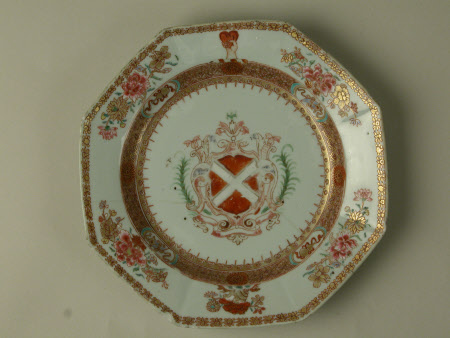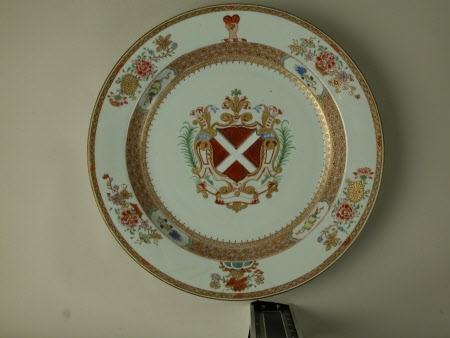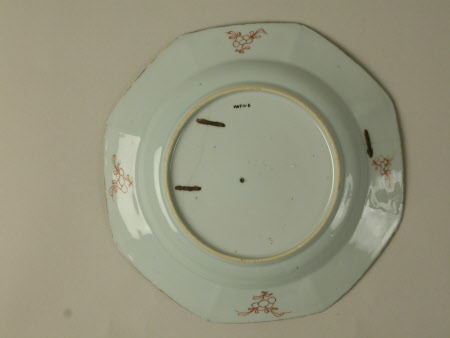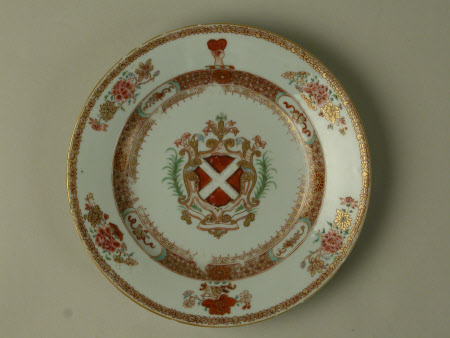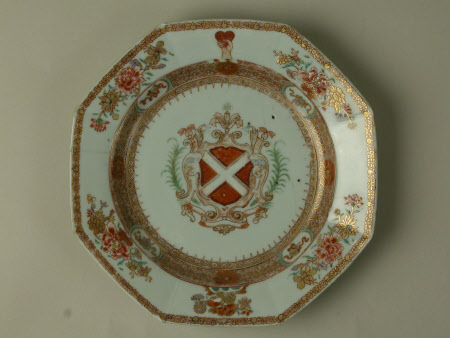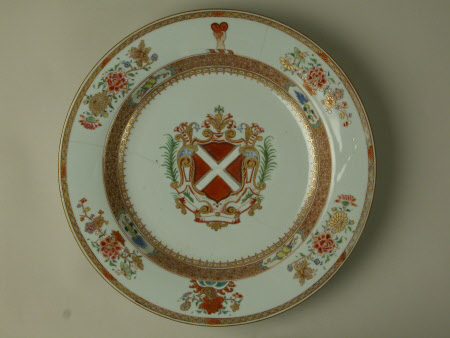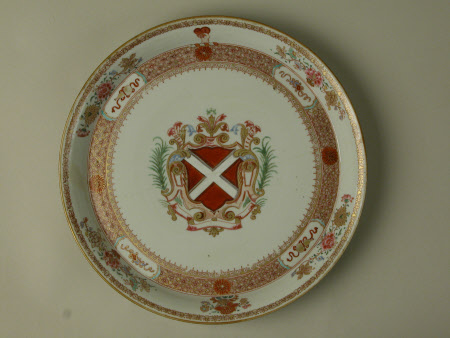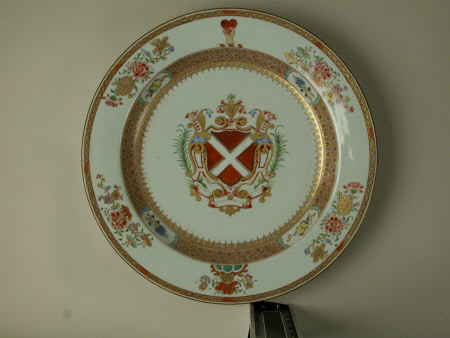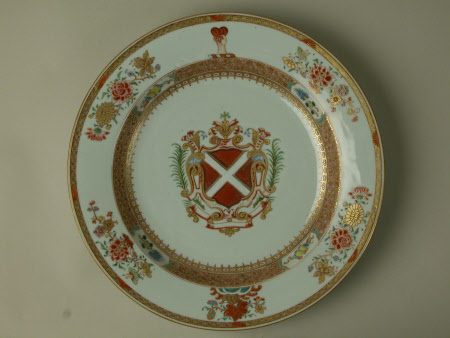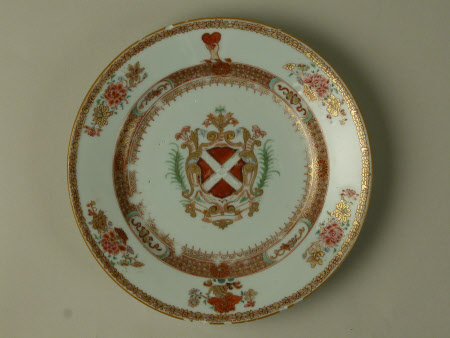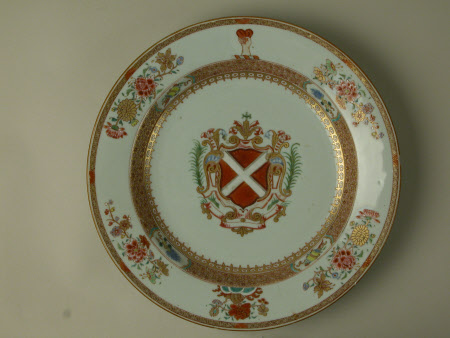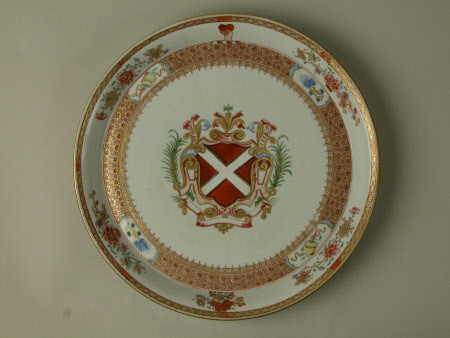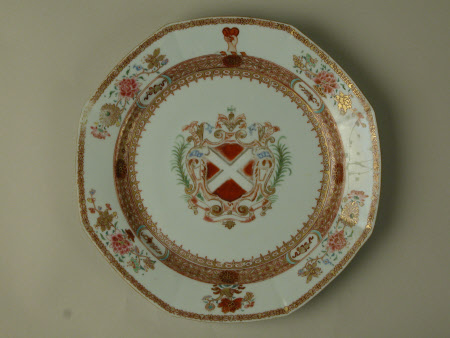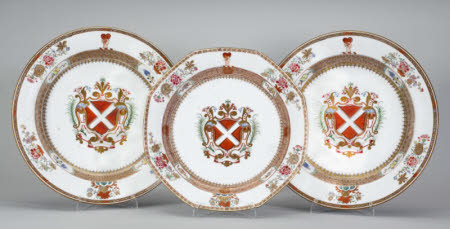Plate
Category
Ceramics
Date
1723 - 1725
Materials
ceramic
Measurements
369 mm (Diameter)
Order this imageCollection
Mount Stewart, County Down
NT 1220252.3
Summary
Plate, porcelain, from a 59-piece armorial table service (1220252.1-59), including: twenty-seven notched octagonal plates, twenty-four circular plates and eight straight-sided saucer-dishes, painted in ‘rouge de fer’ (iron-red) and ‘famille rose’ enamels, and gold, diaper band borders and flowering peony sprays on the rim, the centre with the arms of Cowan, China, Jingdezhen, Yongzheng period, circa 1723–25. According to Angela Howard, Heirloom & Howard Ltd, Sir Robert Cowan (d. 1737), initially ordered two services, this service in polychrome for formal dining and an underglaze blue service for common use (see D. S. Howard, Chinese Armorial Porcelain II, 2003, D2, p. 141, and A4, p. 126). Cowan, a merchant and later Governor of Bombay, worked for the East India Company in India from 1719 to 1735. The combination of circular and octagonal plates is unusual and suggests the richness of the original service. Recent research by Edward Owen Teggin, East India company career of Sir Robert Cowen in Bombay and the western Indian ocean, c. 1719-35., Trinity College Dublin. School of Histories & Humanities, 2020, suggests the service was ordered from Surat in April 1722, while Cowan was living in Bombay. The order is recorded in his letter book, addressed to Scattergood, probably John Scattergood, supercargo of a country vessel sailing between Bombay, Madras and Canton, noting instructions for Cowan’s coat of arms to be applied to the service (see PRONI, Cowan Papers, D654/B/1/1AA, f. 137v). For elements from a later service see 1220255 and 1220257.
Provenance
Gifted to the National Trust from Lady Mairi Bury (1921-2009), 1976.
Marks and inscriptions
(Cowan arms)
